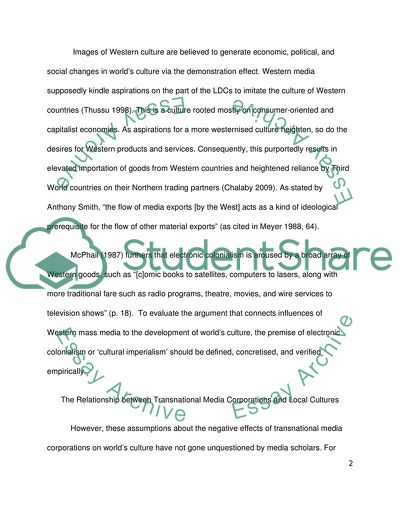Cite this document
(“Transitional Media Corporations Essay Example | Topics and Well Written Essays - 3750 words”, n.d.)
Transitional Media Corporations Essay Example | Topics and Well Written Essays - 3750 words. Retrieved from https://studentshare.org/social-science/1572811-do-transnational-media-corporations-represent-a-threat
Transitional Media Corporations Essay Example | Topics and Well Written Essays - 3750 words. Retrieved from https://studentshare.org/social-science/1572811-do-transnational-media-corporations-represent-a-threat
(Transitional Media Corporations Essay Example | Topics and Well Written Essays - 3750 Words)
Transitional Media Corporations Essay Example | Topics and Well Written Essays - 3750 Words. https://studentshare.org/social-science/1572811-do-transnational-media-corporations-represent-a-threat.
Transitional Media Corporations Essay Example | Topics and Well Written Essays - 3750 Words. https://studentshare.org/social-science/1572811-do-transnational-media-corporations-represent-a-threat.
“Transitional Media Corporations Essay Example | Topics and Well Written Essays - 3750 Words”, n.d. https://studentshare.org/social-science/1572811-do-transnational-media-corporations-represent-a-threat.


